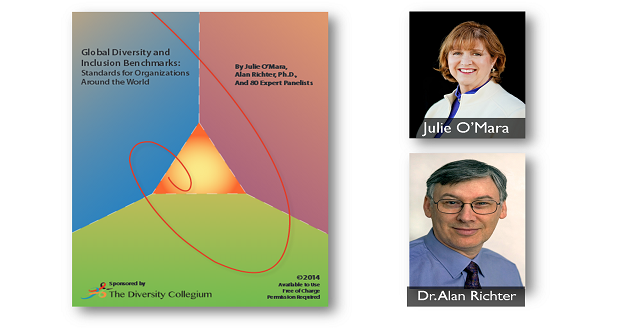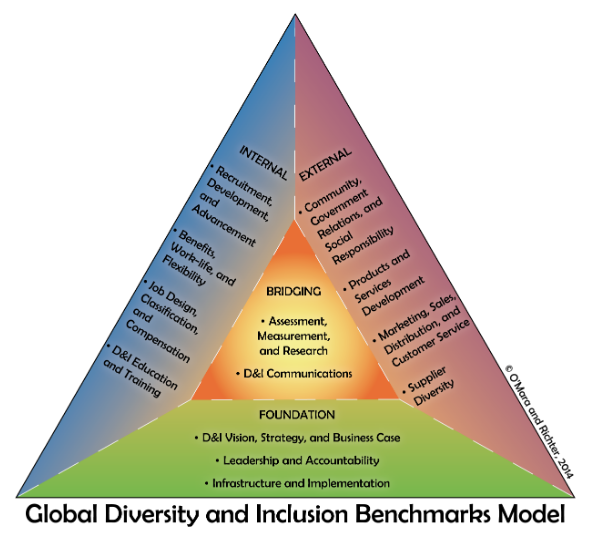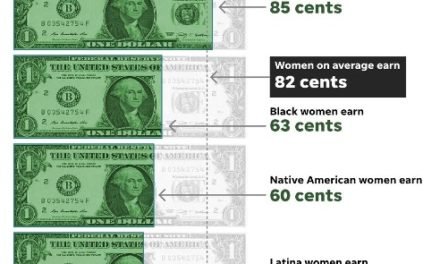
Anyone looking for a comprehensive approach to developing a diversity and inclusion strategy, should consider using the Global Diversity and Inclusion Benchmarks (GDIB), a free resource developed by Julie O’Mara and Dr. Alan Richter, two diversity and inclusion pioneers, and 80 expert panelists. First published in 2006, the benchmarks were updated in 2011 and 2014. I served as one of those panelists.
The 2014 update announced that The Diversity Collegium became the first and primary sponsor of the GDIB. The Diversity Collegium is a think tank of practitioners, scholars and leaders whose mission is to advance the field of Diversity and Inclusion through dialogues, symposia, research and publications.
What are the Global Diversity and Inclusion Benchmarks (GDIB)?
The Global Diversity and Inclusion Benchmarks outline thirteen categories that the authors believe are necessary to develop a comprehensive diversity and inclusion strategy in any organization including for profit, not for profit, government and higher education.
The thirteen categories are further sub-divided into 4 areas distinguishing foundational, internal, external and bridging elements as shown in the diagram below.

How are the Benchmarks Structured?
Each of the 13 benchmarks includes a behavioral description allowing the organization to assess itself from best practice (100%) to not yet started (0%).
The categories and their respective descriptions include:
Foundation Categories
These categories assess the strength of the overall commitment to diversity and inclusion and the organization’s structural ability to carry out the strategies.
Category 1. D&I Vision, Strategy, and Business Case. Covers the organization’s overall approach to diversity and inclusion, its articulation of the value of diversity and inclusion, the requirements of managing diversity and inclusion, and how diversity and inclusion is embedded in the organization.
Category 2. Leadership and Accountability. Covers the responsibilities of the organization’s leadership in shaping, guiding, leveraging, and accounting for diversity and inclusion.
Category 3. Infrastructure and Implementation. Explores the way the organization structures or organizes its diversity and inclusion function so it can effectively carry out its diversity and inclusion goals.
Internal Categories
The four categories in this group focus primarily on strengthening how the organization operates and how the effectiveness of people is increased.
Category 4. Recruitment, Development, and Advancement. Describes the creation of a culture of inclusion that enhances professional excellence and supports selection, retention, and advancement. Ensures that D&I is an important part of hiring and selection.
Category 5. Benefits, Work-Life, and Flexibility. Describes the way work is organized and the extent of flexible work arrangements. Gauges the benefits and services provided to employees to meet their needs and concerns.
Category 6. Job Design, Classification, and Compensation. Explores the way jobs are designed, classified, compensated, and assigned. Includes assessment of reward and recognition systems and how an organization is fair and equitable.
Category 7. D&I Training and Education. Explores diversity and inclusion awareness, skill-building training and education, and the integration of such training into all training and development. Explores the extent to which performance improvement and training are provided equitably.
Bridging Categories
The two categories in this group are critical linkages that bridge foundational work with the internal and external focus of diversity and inclusion in the organization.
Category 8. Assessment, Measurement, and Research. Evaluates the way diversity and inclusion is measured, whether the organization does research to support diversity and inclusion strategies, and the organization’s assessment processes around diversity, inclusion, and organizational culture.
Category 9. D&I Communications. Describes how diversity and inclusion is articulated, promoted, and embedded into the organization’s internal and external communication strategy.
External Categories
The four categories in this group relate to how the organization offers its products and services and interacts with its customers and other stakeholders.
Category 10. Community, Government Relations, and Social Responsibility. Covers the organization’s efforts to engage and invest in its communities. This category also covers government relations and social responsibility.
Category 11. Products and Services Development. Gauges the organization’s recognition of the diversity of its customer base and its effectiveness in designing and delivering products and services to current and future customers.
Category 12. Marketing, Sales, Distribution, and Customer Service. Surveys the organization’s recognition of the diversity of its customer base and its sensitivity to the nuances of language, symbols, and images used in its distribution, sales, and marketing strategies, thereby attracting and satisfying prospective and current customers.
Category 13. Supplier Diversity. This includes the processes of selecting, contracting, and interacting with the organization’s suppliers and vendors in a manner that supports and grows diversity and inclusion values and goals along the supply chain.
The Five Levels
The best practices in each category are shown as 100 percent. For each category, the benchmarks are divided into five levels that indicate progress toward the best practices in that category:
At 0%: No diversity and inclusion work has begun; appreciation of diversity and a culture of inclusion are not organizational goals. We avoided negative percentages, so for example, a pervasively harassment-filled work environment would be lower than 0%.
At 25%: Compliance mindset at best; symbolic actions only.
At 50%: Beginning of a programmatic thrust; moving in a healthy direction.
At 75%: Seeing diversity and inclusion systemically; a robust diversity and inclusion approach.
At 100%: Current best practices in diversity and inclusion around the world.
In the next post we will go into more detail on the different categories and in subsequent posts we will explore different ways to use the tool.


















